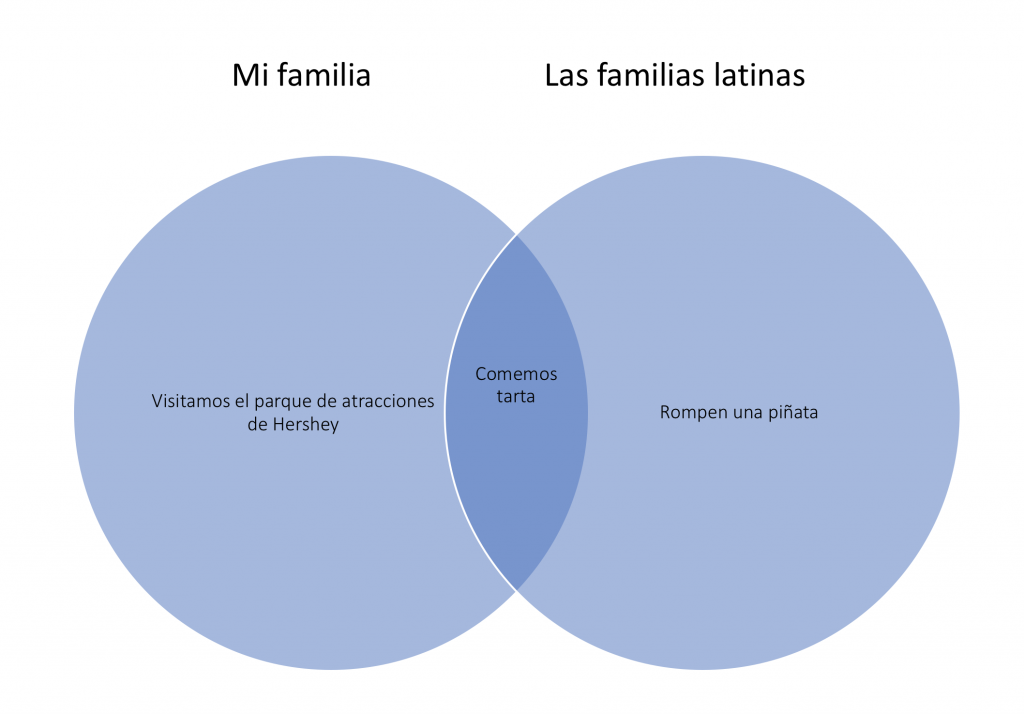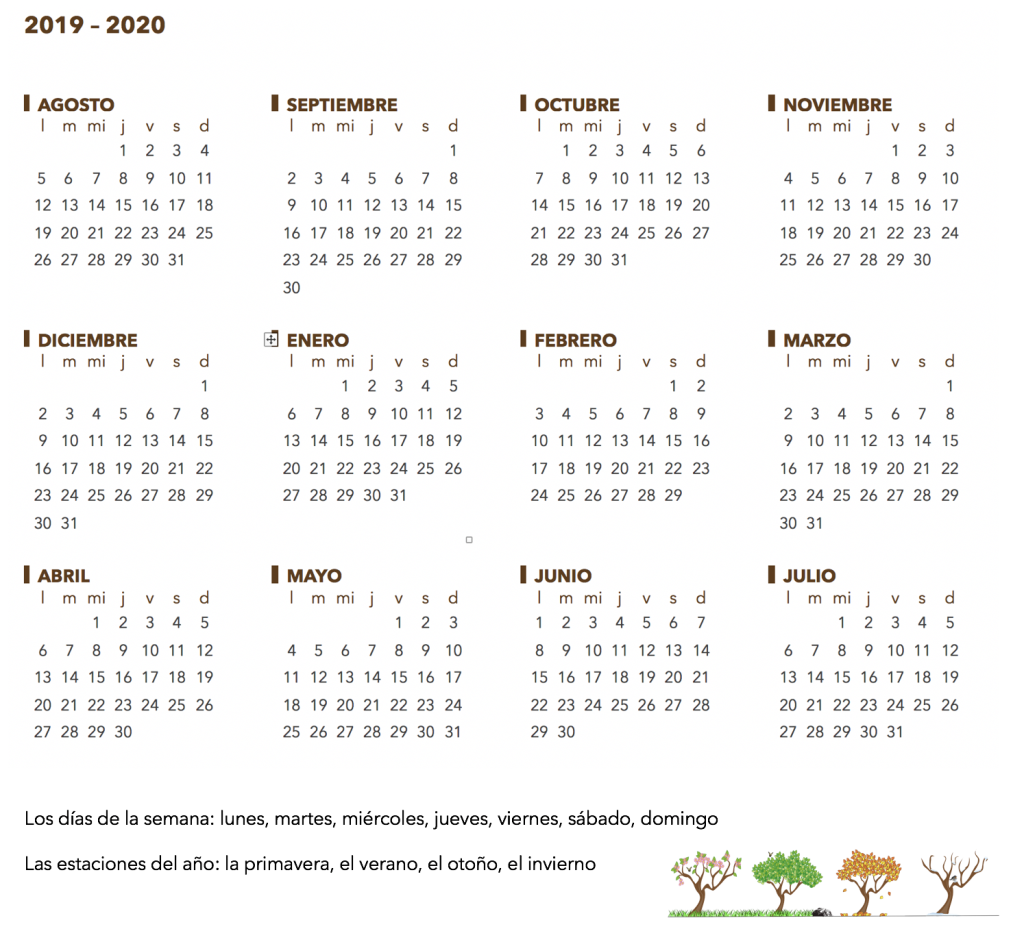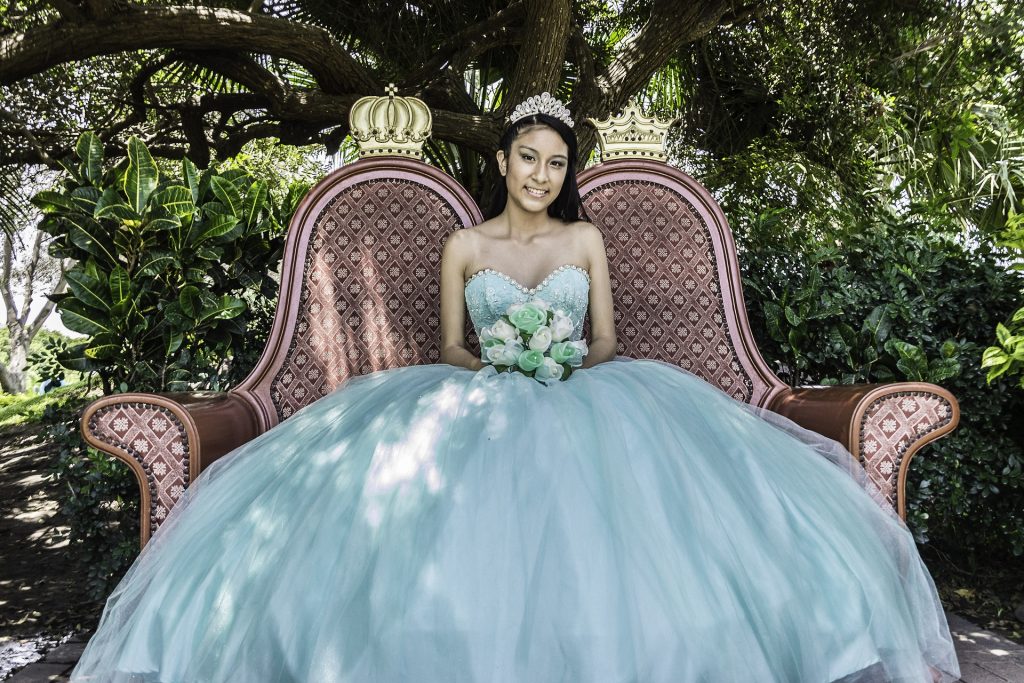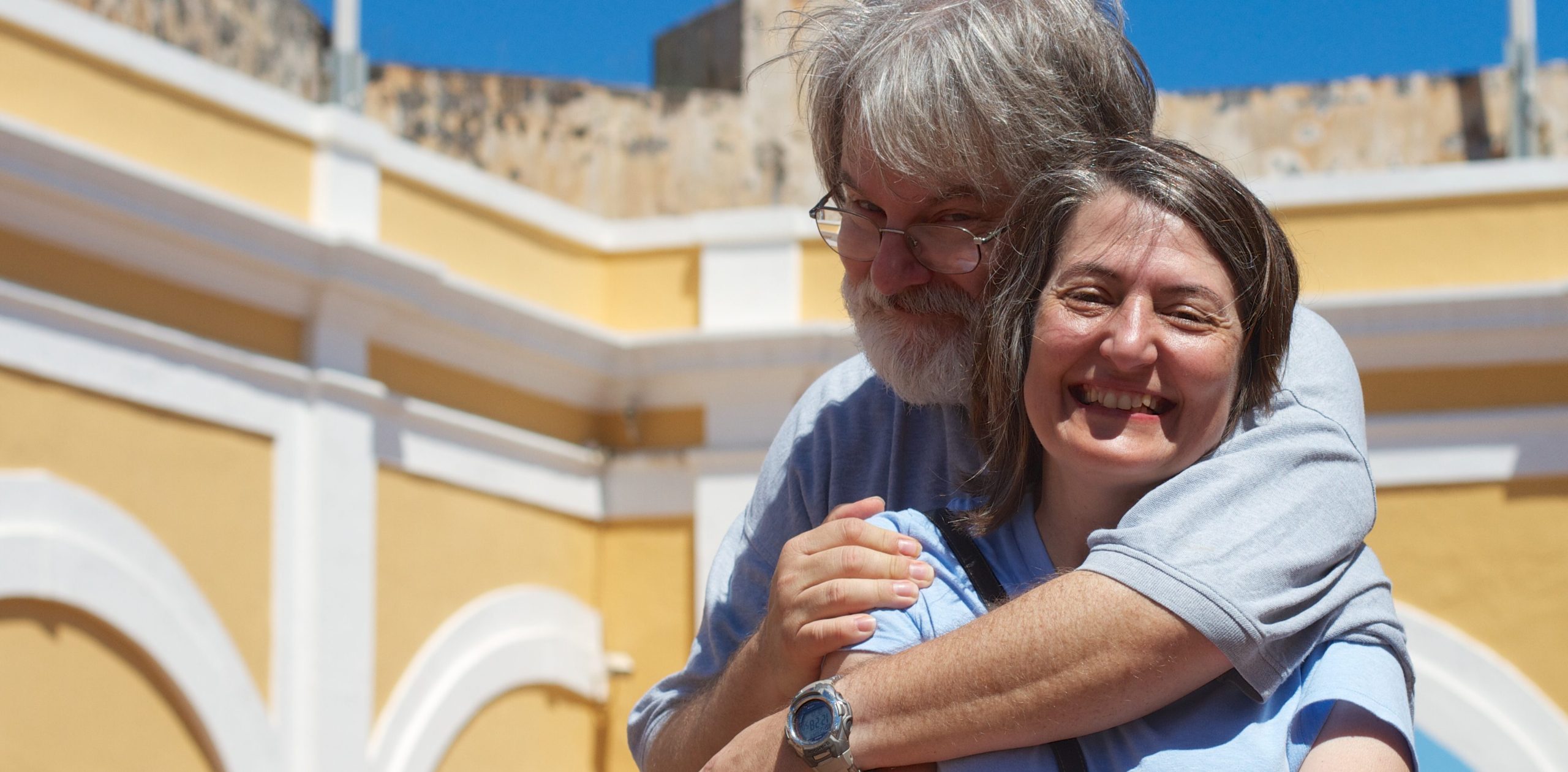El cumpleaños
Todas nuestras familias marcan eventos importantes en diferentes maneras. Muchas familias—latinas y no—celebran con fiestas y ceremonias religiosas o civiles.
El cumpleaños es el día cuando una persona celebra que tiene un año más. Frecuentemente, la familia del cumpleañero prepara una fiesta. Invita a muchas personas y a toda la familia a la fiesta, donde la gente escucha música, baila, come y bebe. Los invitados compran regalos para el cumpleañero o le dan dinero. Por lo general, hay una tarta con velas, y todos cantan una canción especial, “Cumpleaños feliz” (la música de “Happy Birthday” con palabras en español), “Las mañanitas” (especialmente en México) o “Feliz, feliz en tu día”.
Una tradición mexicana que se extendió a muchas partes del mundo es la piñata. El cumpleañero y los invitados rompen la piñata con un palo para “liberar” dulces, chocolates y juguetes pequeños. La piñata es parte de la fiesta de cumpleaños y también de otras fiestas, por ejemplo, la Navidad o la fiesta nacional (el cuatro de julio en Estados Unidos, el dieciséis de septiembre en México).
Entender la materia: ¿Mi fiesta de cumpleaños es muy latina?
Create a Venn diagram and label it in Spanish with common activities and elements in the birthday celebrations of Latinos and in your own family or group of friends. Don’t worry about conjugating the verbs; just list infinitives. Every Latino family is different, of course, as are non-Latino families, and you might be Latinx, so your diagram might not be the same as a classmate’s. Personalizar la lección—La fiesta de cumpleaños ideal
Personalizar la lección—La fiesta de cumpleaños ideal
Grammar—Verbs that end in -er
Some of the verbs on the vocabulary list for this lesson end in -er. That’s a new category of infinitives, and when you learn these endings, you’ll have learned the endings for all three regular present tense infinitives in Spanish (-ar, -er, and -ir). Learn how to conjugate regular -er verbs by watching the video below. When you’re ready for more practice, create a quiz of regular -er verbs for yourself at SPALEON’s website.
Watch the video below: Present Tense -er Verbs.
Grammar—The verb dar
There’s a slightly irregular verb on the vocabulary list, dar (to give). Learn how to conjugate it by watching the video below: Dar ( To Give) in Present Tense.
Mi cumpleaños perfecto
Imagine your perfect birthday. Using vocabulary from the readings above and the activities you generated in the Venn diagram, write a list of things you do that day. Include your friends and/or family in your list.
When you complete your list, tell a classmate what you do on a perfect birthday and ask if he/she does the same. Look at the modelos for help:
- Estudiante 1: En mi cumpleaños perfecto, yo como tarta. ¿Y tú?
- Estudiante 2: Yo como tarta también.
- Estudiante 1: En mi cumpleaños perfecto, mis padres cantan “Happy Birthday”. ¿Y tus padres?
- Estudiante 2: Mis padres no cantan “Happy Birthday”. Cantan “Las mañanitas”.
- Estudiante 1: En mi cumpleaños perfecto, mis amigos me dan regalos. ¿Y tus amigos?
- Estudiante 2: Mis amigos me dan regalos también.
Grammar—The verb venir
Earlier in this unit, you learned how to conjugate the verb tener. A verb that is conjugated in a very similar way is venir, “to come”. Just swap the “t” in for a “v”, and you’re done—except for nosotros (venimos) and vosotros (venís). For extra practice, try selecting venir and the other irregular verbs you’ve learned so far (dar, tener, ser, estar) to create a quiz on SPALEON.
¿Quiénes vienen a tu fiesta de cumpleaños?
Practice the new verb venir by exchanging information with a classmate about who comes to your birthday parties. Hint: ¿quién … ? is used for “who” when we’re asking about one person or we have no idea if it’s one or more person, and ¿quiénes … ? is used when we’re sure we’re asking about more than one person, like the non-standard “who all” in English.
Modelo:
- Estudiante 1: ¿Quiénes vienen a tu fiesta de cumpleaños?
- Estudiante 2: Mis amigos vienen, mi prima viene. Claro, yo vengo.
¿Cuándo es tu cumpleaños?
En 1993, la Organización de las Naciones Unidas declara el 15 de mayo como “El Día Internacional de las Familias”. Es un tipo de “cumpleaños” para celebrar las familias. ¿Cuándo es tu cumpleaños? Consulta este calendario para aprender los nombres de los meses, las estaciones y los días en español.
Ask these questions of as many of your classmates as possible until your instructor calls time.
- ¿Cuándo es tu cumpleaños?
- ¿En qué estación es tu cumpleaños?
- ¿Cuál es tu estación favorita?
¿Qué dia la semana es tu cumpleaños este ano?

¿A qué hora es tu fiesta de cumpleaños?
To express at what time things happen or to ask and tell what time it is, you need a few simple formulas in Spanish. Watch the video below: Telling Time to learn them. Those words are included in the vocabulary list on Quizlet, too.
Take turns asking and telling a classmate at what time these events occur in your lives.
Modelo:
Estudiante 1: A qué hora tienes la clase de inglés?
Estudiante 2: Tengo la clase de inglés a las once de la mañana.
- la fiesta de cumpleaños
- la clase de español
- la siesta
- la comida (meal) del Día de Gracias
- práctica para un deporte
La fiesta de quinceañera

Un momento especial para las adolescentes en muchos países hispanohablantes es el día cuando cumplen los quince años. La fiesta de quinceañera (también “el quince” o “el XV”) es una gran celebración familiar que marca la transición de ser niña a ser mujer.
Una fiesta de quinceañera tiene dos partes—primero, la ceremonia religiosa en una iglesia y segundo, la fiesta en un parque, una playa o en el salón de fiestas de un hotel o restaurante. Entre los elementos importantes comunes en las fiestas de quinceañera son una tiara, unas flores, una Biblia y un vestido largo y elegante para la quinceañera. Además, hay un banquete grande con una tarta enorme, muchos invitados, música para bailar y un baile especial con la quinceañera y su padre.
Una fiesta de quinceañera normalmente cuesta mucho dinero y puede representar años de planificación y ahorros por parte de la familia. La familia y los amigos de la quinceañera a veces participan en los costos de la fiesta. Por ejemplo, pueden pagar la fotografía, las invitaciones o la banda de música o el DJ. Las industrias de fiestas de quinceañera representan millones de dólares al año para la economía de los Estados Unidos y muchas oportunidades para la creación de nuevos negocios en este mercado grande y creciente de nuestro país.
Entender la materia
Elementos importantes de la fiesta de quinceañera
With a classmate, search online for one or two videos of quinceañera parties. Here are some good search terms: “mi quince”, “fiesta de quinceañera”, “fiesta de xv”. Together, make a list of elements from the reading above that appear in the video.
Una artista y su visión
Carmen Lomas Garza es una artista chicana de Texas. El estilo de Lomas Garza es distintivo. Su arte es figurativa (representa la realidad) y sus figuras son planas (flattened). Observa la pintura “Quinceañera” de Lomas Garza. Identifica los elementos de la fiesta de quinceañera que están presentes en la pintura. Identifica una figura plana.
Read this interview with the Chicana artist Carmen Lomas Garza and answer the questions in English. Vocabulary note: “Chicano” is a word used to describe citizens of the United States whose ancestors came from Mexico.
- In what ways did Lomas Garza experience or witness institutionalized racism as a child?
- Why did she decide to become an artist?
- What does she hope to achieve with her art?
- Who was her inspiration?
El quince de Vanesa
Read the invitation to Vanesa’s quince, which you’ll see below. Create four questions about it in Spanish to ask your classmates. Of course, you’ll write the answers, too, so you can let your classmates know when they’re correct.

Los valores de mi familia
- In this unit, you’ve learned some cultural values (familism) and practices (linguistic dominance and what happens on some holidays) that are common among Latino families. Write a paragraph that compares and contrasts your family’s values and practices to those you learned about here. Review what you’ve learned and follow the modelos for ideas:
- Mis antepasados son de Francia. Yo no hablo francés, pero mi abuela sí habla francés un poco. Hablamos inglés en mi familia.
- En mi familia, el respeto es importante, como en las familias latinas. A diferencia de las familias latinas, el concepto de “familia nuclear” es importante para nosotros.
- No celebramos la fiesta de quinceañera, pero celebramos los cumpleaños. Normalmente comemos en un restaurante. Como en las familias latinas, comemos tarta, pero no bailamos mucho y no tenemos una piñata.
After completing this theme, I can …
- in Spanish, contrast and compare elements and activities that occur at birthday celebrations of Latino families those of the dominant culture of the United States.
- narrate typical activities of myself, family, and friends at celebrations.
- in Spanish, describe a fiesta de quinceañera and relate its importance.
- give dates of birth and other dates in Spanish.
- express at what time things happen in Spanish.
- ask and tell what time it is in Spanish.
- recognize representative works of art by the Chicana artist Carmen Lomas Garza.
- relate, in English, how Lomas Garza’s experiences of institutionalized racism impacted her art.

